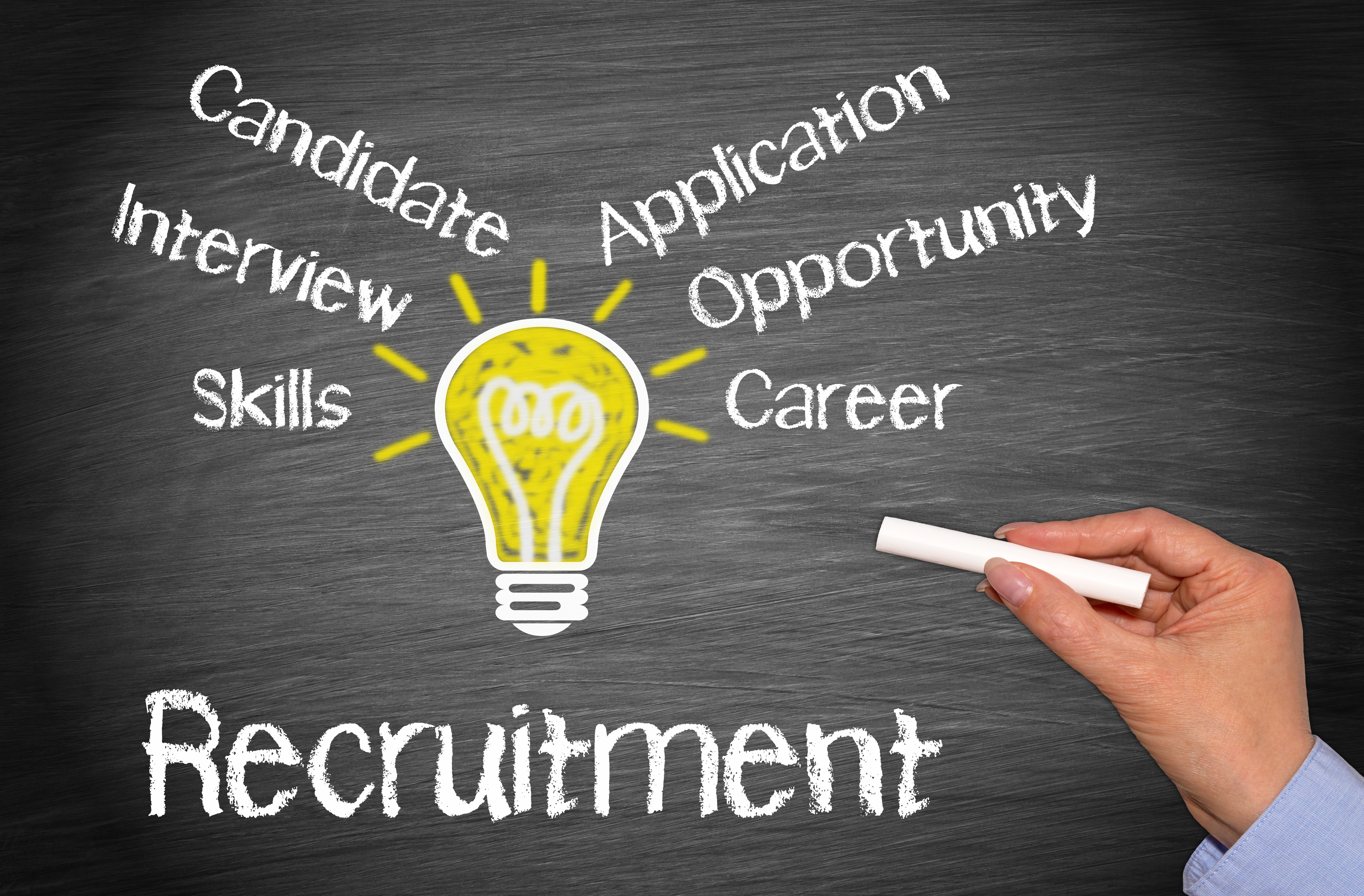« previous | 1 2 3 4 5 6 7 8 9 10 11 12 13 14 15 16 17 18 19 20 21 22 23 24 25 26 27 28 29 30 31 32 33 34 35 36 37 38 39 40 41 42 43 44 45 46 47 48 49 50 51 52 53 54 55 56 57 58 59 60 61 62 63 | next »Displaying posts 196 – 200 of 315
Thursday, August 18, 2016
by julie

EFFECTIVE HIRING
Every business has a uniqueness due to culture, organization structure, tenets, practices, and goals. Competition is everywhere, opportunities for growth abound, challenges are multiple, and technology is forever changing. A key to business success is improving productivity with less effort and resources. People are the backbone of all organizations and bad hires cost a business financially, productively, and emotionally.
Roles do not always have equal value in parallel businesses. There are three levels of value with a lot of degrees of separation: strategic, tactical, and maintenance. Competition for talent has increased since 2014 and hiring effectively means both correctly and quickly. Here are a few suggestions when recruiting, evaluating, and hiring a new employee.
Identify a small team of decision makers: Less people involved is quicker and more efficient. Often companies preach being proactive, forward thinking, and customer focused and then effuse a hiring process that is cumbersome and too lengthy.
Develop a time line: Assume that the best candidates are being recruited by other companies and will not be available for long. Best practices means being efficient. Establish a time line for first and second interviews to move through the evaluation process as quickly as possible. Try avoiding more than a 2 step process. This is a positive message to all parties.
Create a scorecard: The hiring team must all be on the same page regarding responsibilities, value of role, ability to contribute, and first year expectations. Go beyond the job description and create a score sheet of core competencies that include knowledge, experience, and soft skills that are essential. Not all items on the score sheet are equal. Identify how the team is going to evaluate items on the score card. Meet after interview and discuss scoring.
Ask interesting questions: Behavioral interview is quite common and viewed to be 50-60% predictive of future performance. Be premeditated and create questions that are aligned to the score card. Ensure that hard and soft skills, knowledge, experience, and acumen are appropriately evaluated. Believe it or not, there are hiring authorities that do not ask questions, end up talking too much, and then wonder why the new hire did not meet expectations.
Be prepared to sell: All candidates need to feel positive following the interview process even if they are not the candidate of choice. If a candidate warrants future interest, leadership needs to sell the opportunity, culture, synergies, business future and any other positive insight. This is the “pull” factor and essential to securing talent.




 Top
Top
Wednesday, July 13, 2016
by julie

INTERVIEWING TURNOFFS
The majority of career driven professionals do not interview very often so when a strong motivation occurs to change employment or an opportunity appears that is irresistible, most are unprepared for the interviewing process. Getting an interview can be challenging and requires a marketing driven resume, often a strong network of informed business professionals, the appropriate opportunity, good timing, and a bit of luck. Preparing for the interview requires researching the company and individuals that you will be meeting with, preparing examples of experiences and knowledge that relate to the opportunity, and developing a list of questions that exhibit interest in the business model, culture, leadership, and role.
Assuming all of this has been accomplished, the day of the interview is before you. Here are five turnoffs that derail the most qualified and prepared candidate even if you think you did well.
Too Early or Being Late….Time management is very important. Being too early or arriving late for an interview indicates poor time planning and management. Arrive 3-7 minutes prior to the designated interview time.
Inappropriately Dressed…..know who you are interviewing with and dress for success. Being too casual is a turnoff just like too much makeup, perfume/cologne, or jewelry. This is not a date nor a casual get together. Be conservative….first impressions are often lasting impressions and made in the first 2-3 minutes of the interview. Interview to impress.
ME and not WE….every company has goals and the role that you are interviewing for will require leading or contributing on teams that are goal driven. When an applicant is too heavy on the self-promotion and their personal advancement, it is a turnoff. Illustrations of experiences, contributions, and knowledge must be a combination of “me” and “we” statements that showcase success working with internal and external customers.
Talking Down on Former Employers or Bosses….Interviewing is not a confessional. Talking poorly about past employers establishes a negative tone and makes the hiring authority question what you might say about them in the future. If you can’t say something positive about your former employer, then do not say anything at all.
Being a “Yes” Person….Companies are looking for candidates that are career driven, want to contribute to the success of the business, and have a voice in change and evolution. That requires a backbone and a desire to speak up and not always agree. If you are portrayed as a “Yes” person then you stand for nothing and you will fall for anything.




 Top
Top
Friday, June 17, 2016
by julie

The Gig economy is the new approach to business structure and employment. Traditionally employees have a set schedule, received weekly/monthly salary and worked at their employer’s location. “Gigging” is dismantling the bindings on work expectations and allowing employees to set their own hours, availability and deliverables. The key factor that is driving the Gig economy is technology. The most visible applications are consumer applications (e.g. retail, banking, transportation); however the Gig momentum is embracing all businesses.
Companies are plagued with vacancies they want to fill and most often in critical areas like engineering, R&D, finance, technicians, software developers, and other roles requiring specific skills, knowledge, and experience. Bench strength does not exist in business other than large companies with robust talent development programs. So the majority of businesses need to be more resourceful and consider part time or contract resources and due to technology, not all of these need to be local or viewed as employees.
In 2014 about 34% of the workforce was freelance or contract (non-employee) workers and by 2017-2018 it is expected that 50% or more will be contract or freelance. The two biggest challenges have been the instability and pressure for freelancers to find work and the willingness for companies to consider contract resources rather than full time employees. The downturn in the economy in the 2008 to 2011 dismantled a lot of organizations and put talent on the street. Consulting or contract work was an alternative solution. Then advances in technology provided this available workforce to often work remote and contribute. In 2014 it is estimated that “non-employee” talent contributed $715 billion in earnings to the USA economy.
In 2016, over 93% of businesses have temporary, contract or part-time employees and view the “new workforce” as a key element to developing and running a successful business. Employees have been the key to most companies success and going forward it may be the combination of employees and non-employees that drive the success of business depending on whether you choose to “Gig or Not to Gig.”




 Top
Top
Wednesday, May 25, 2016
by julie

We are thrilled to share our most recent top ten recently completed searches!
Human Resources Director, Privately-held Manufacturer
CFO, PE Funded OEM
Senior Accountant, Healthcare Provider
IT Director, Privately-held OEM Distributor
Marketing Manager, PE Funded Technology Industry
Treasury Director, Global Communications Leader
Manufacturing Engineer, Security Products Manufacturer
Market Planning Manager, Consumer Products Distributor
Audit Manager, Regional CPA Firm
Distribution Manager, Global Sensors Industry
Some Fun Facts For Your Next Networking Event
Did You Know?
In last 46 years, US debt has grown from $1 trillion to $58 trillion?
USA consumes the most food per capita?
People unemployed for 15+ weeks is at 2.1% while national rate is now 4.9%?
A bay scallop may have up to 100 brilliant blue eyes?
Apple has more cash than the U.S. Treasury?
Denali National Park (Alaska) has six million acres?
A football coach is the highest paid public employee in over 50% of all states in USA?




 Top
Top
Tuesday, May 17, 2016
by julie

Companies want to hire and on-board more efficiently. The competition for talent has gained momentum over the last 18 months as unemployment decreases, companies expand, and the number of retirements increase. Neither the hiring companies nor the interviewing talent have a lot of available time to interview.
Initial interviews are often done over the phone with either a human resource professional or hiring authority. The goals of the phone interview are primarily to introduce the company and opportunity, gain an impression of the applicant’s soft skills, review employment history, and validate a few key requirements of the opportunity.
If all goes well, then the applicant is invited to visit the company and more often will have a group or panel interview. The reason most employers conduct group interviews is to save time and be more efficient. Panel interviews allow the hiring team to gather impressions all at once, eliminate the annoyance of answering the same question over and over, and provide better insight on the opportunity and culture.
From the candidate’s perspective, panel interviews can be intimidating and there are a few core tenants that will help this kind of format. Before you interview, ask the company to provide names and titles of people that you will meet and conduct research on each of the panel members to best understand the potential future relationship (e.g. superior, peer, subordinate). Think of experiences you can share and questions you might want to ask specific panel members.
Upon starting the interview, introduce yourself to each panel member. This will help to break the ice and establish a connection. While fielding questions, avoid staring at a single person, smile, and open your gaze to the others in the room. Even though you will be asked questions, be premeditated with examples of experience, knowledge, and abilities that showcase the appropriateness of your candidacy for the opportunity.
Not all panel members are equal. Everyone is looking at the role to be filled from a different perspective. The goal is to identify the core requirements of the role and the opportunities to make a contribution. The candidate that will be hired is someone the group feels will meet or exceed their expectations. Asking insightful questions shows interest in the opportunity and can lead to conversations and discussions that will allow you to illustrate past experiences and provide examples that relate to the role, panel members, and the opportunities to make a difference.




 Top
Top
« previous | 1 2 3 4 5 6 7 8 9 10 11 12 13 14 15 16 17 18 19 20 21 22 23 24 25 26 27 28 29 30 31 32 33 34 35 36 37 38 39 40 41 42 43 44 45 46 47 48 49 50 51 52 53 54 55 56 57 58 59 60 61 62 63 | next »Displaying posts 196 – 200 of 315





